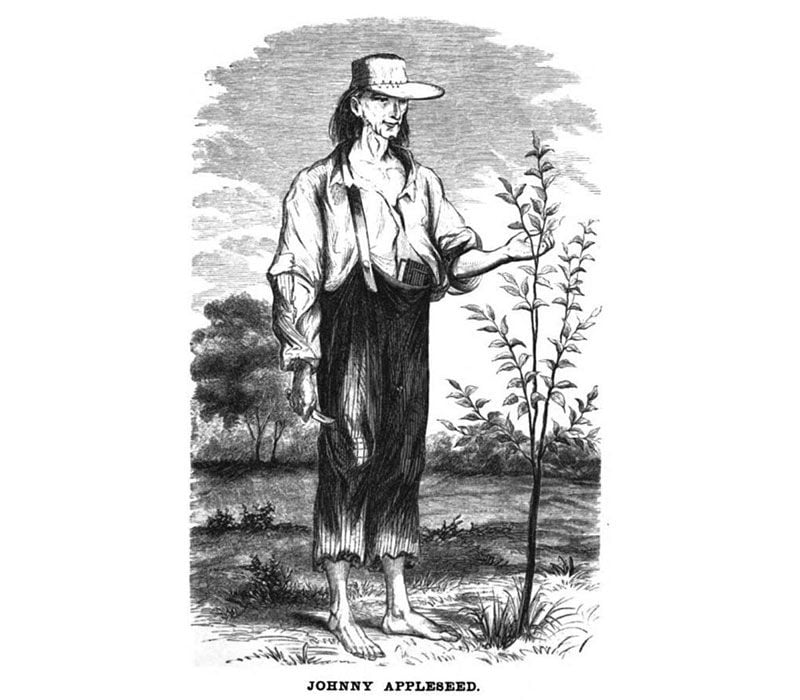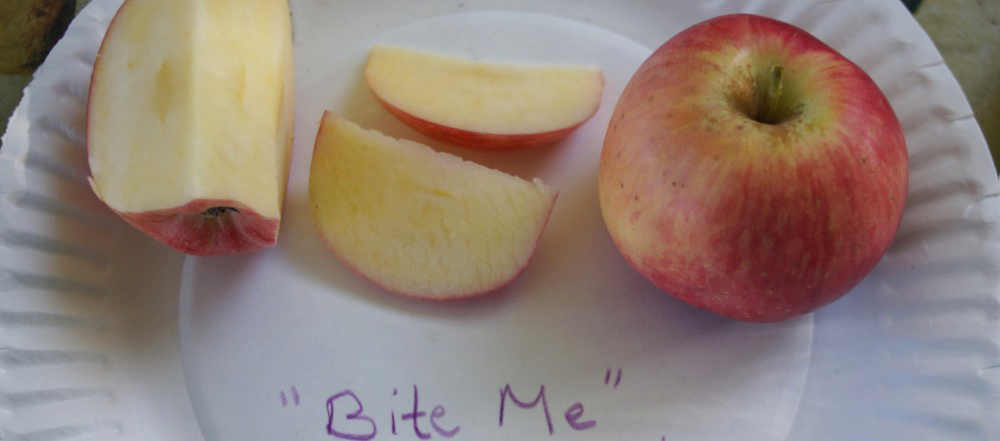I don’t know where these notions come from. I’ve read about Johnny Appleseed from time to time but am unable at the moment to quote any actual sources.
I think you have to put yourself in the pioneers’ frame of mind. My Dad’s family came West in the early 1800s by fits and starts from the Carolinas through Kentucky to Ohio and eventually to Indiana. There is a so-called family history of the migration, but it’s a gloss. It doesn’t go into detail about what time of year they traveled or whether they had to forego a crop year on the journey and how they handled the finances of acquiring new land and liquidating previous holdings. All that stuff is left to my imagination.
I doubt that they traveled much when planting was underway and when harvest was due. This left a narrow, highly anticipated introspective window in high summer when non-farming activity could be contemplated. This was when John Chapman was out and about. He was notorious in his day. There weren’t all that many White men “on the frontier,” and most would have known a story about Johnny Appleseed. There were a handful who’d met him, and many would have known of someone who knew someone who had ostensibly. And that’s all it takes really to make a legend. That the man was evidently a spellbinder helped his reputation. Folks stuck in summer doldrums would have welcomed the opportunity to invite the neighbors to hear him speak whether or not he was selling something and regardless of what he was preaching.
I doubt that the pioneers traveled in the Spring when rain on frozen ground would send snowmelt to fill every gully and creek between this farm and that. In the days before improved roads and drainage systems, it would take weeks for the runoff to subside.
I imagine that they traveled mostly in the depths of winter — despite the risk and uncomfortable weather — because rolling a loaded wagon over frozen ground can be somewhat easier than through mud. They brought with them the carefully wrapped dormant scions of fruit trees from the old homesteads.
When they arrived, they set to work clearing the ground enough to squeeze in a crop and start the orchard. Fruit was one among many crops, and apples were food for people. They were eaten out of hand, baked, dried, sauced, cooked as a vegetable with other victuals, and juiced. The fermented juice was mostly stable in the colder weather that followed harvest. The applejack from freeze distillation of hard cider would keep indefinitely. And there was vinegar for preservation of other food stuff. Each variety of apple had a local — albeit transplanted — fan base for this, that, or the other purpose as food. Providing the orchard infrastructure was not the only business, but it was considerable.
Where did they get their rootstocks? Conveniently Chapman had been there years before, had planted and tended a grove of seedling apples, and moved on, leaving the franchise in the care of the owners of neighboring parcels. Pioneers knew where these groves were located and went there during the spring thaw. They bought as many seedlings as they could and took them home as rootstocks for their heirloom scions. On his next circuit, Chapman would collect his share to finance his peregrinations.
What was the point? There is or there isn’t one, I suppose. One point is that pioneers shaved a year or two off starting their own orchards, which got them up and running a little quicker. Another point is that — in spite of his otherworldly views — Chapman’s relatives inherited quite a tidy little fortune in small plots scattered hither and yon in handy locations throughout the early frontier.





